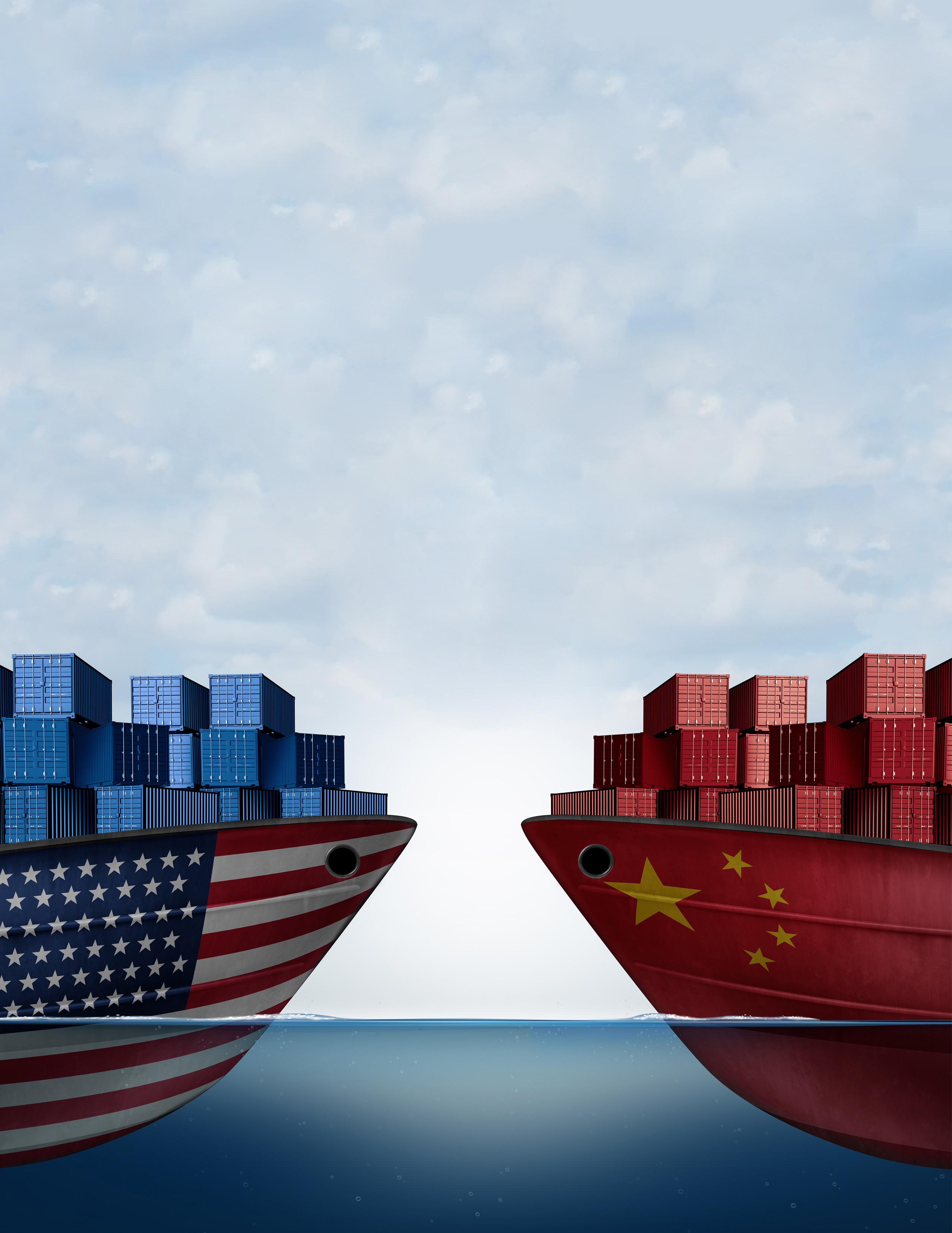
4 minute read
SANCHIRICO
the effect of the TRUMP TAX CUT PLAN on GLOBAL TARIFF FIGHT
on research by CHRIS WILLIAM SANCHIRICO Samuel A. Blank Professor of Law, Business, and Public Policy; Co-Director, Center for Tax Law and Policy
CHRIS WILLIAM SANCHIRICO
The Trump administration’s imposition of tariffs against China’s exports of aluminum, steel, and other goods has garnered headlines worldwide, but the new U.S. tax code contains a provision that lowers the corporate tax rate significantly for American businesses earning certain kinds of income abroad and has implications for U.S. trade policy – yet few other than tax experts are aware of it.
This may change as the issue enters the policy spotlight, writes Chris Sanchirico, a professor of law and co-director of the Center for Tax Law and Policy at the University of Pennsylvania Law School, in a new paper, “The New U.S. Tax Preference for ‘Foreign-Derived Intangible Income.’” A new provision in the Tax Cuts and Jobs Act of 2017 lowers the corporate tax rate from 21 percent to just over 13 percent on “foreign-derived intangible income” (FDII), income derived from exports and attributable to intangible business assets, such as intellectual property (IP), patents, copyrights, and trademarks.
Because the provision is newly adopted and somewhat novel in form, Sanchirico writes, there has been little discussion of it to date, with some exceptions. For example, in December 2017 the finance ministers of Germany, France, the UK, Italy, and Spain sent a joint letter to the U.S. Treasury Secretary expressing concern over the GOP’s proposed FDII provision — which was shortly thereafter adopted — warning that it constituted both an export subsidy in violation of international trade agreements such as the WTO, and a preferential tax regime for income derived from intangible assets in violation of international tax agreements, specifically a lesser-known OECD agreement regulating preferential tax regimes for IP income.
Since the European letter, the FDII issue has been “eclipsed by an eruption of measures and threats signaling the U.S.’s newly proactive — some might say aggressive — approach to trade policy,” notes Sanchirico, such as the tariffs the Trump administration has imposed on imports from China.
“The question arises,” the study author writes, “whether the shift of international attention away from FDII is simply due to the urgency of more recent events or rather reflects the fact that FDII is ultimately less significant.”
Sanchirico acknowledges that the question is not easy to answer. But his rough calculations based on Congressional revenue estimates suggest that FDII is of comparable importance; he points out that the volume of exports affected by FDII is in the $300 billion range, compared to the previously-threatened $150 billion of Chinese imports. In addition, Sanchirico explains, the China tariffs are likely “temporary and contingent on Chinese policy,” while “FDII has no scheduled expiration under US law.”
Moreover, the author finds that the provision is not as clearly in violation of international agreements as some may indicate. With respect to trade agreements, specifically a portion of the WTO Agreements known as the Agreement on Subsidies and Countervailing Measures, Sanchirico writes that “although it seems clear that FDII is ‘export-contingent,’ it is not as obvious that it is a ‘subsidy,’” under this agreement. The touchstone for “subsidy” is forgone tax revenue. And in light of the U.S.’s shift to a “territorial” tax regime under the same new law, whereby the U.S. relinquished taxing foreign subsidiary income, it is not clear that FDII ought to be regarded as a revenue loser.
With respect to the claim that FDII violates international tax agreements — in particular, those reached within the OECD’s Base Erosion and Profit Shifting Project (known as BEPS) — though it “seems clear that FDII does not fit within the specific parameters of allowable preferential tax regimes for ‘IP assets,’ it is not as clear why large portions of it could not be repackaged as a preferential regime for non IP-assets,” Sanchirico points out in the paper.
Moreover, Sanchirico notes, “the practical significance of any violations that might be found” with respect to agreements on either trade or tax “is increasingly uncertain.”
Finally, the paper attempts to shift discussion toward whether the provision makes sense purely as a matter of national policy, “more precisely, U.S. policy without regard to any inherent or strategic value that there might be in following international agreements.”
Here, Sanchirico argues in this analysis FDII is more problematic. “To be sure: this is not because export subsidies or intangibles subsidies are always a bad idea” — as loss-leaders or retaliation against trade restrictions. “Rather it is because the setting in which the provision is imposed is quite different from — in some respects almost the opposite of — the kinds of situations in which such subsidies might be warranted.”
In sum, Sanchirico writes, while FDII is likely not a violation of international trade or tax agreements, it may be hard to justify as a national tax policy position. “IP-intensive U.S. multinationals like the
FAANGs (Facebook, Amazon, Apple, Google/Alphabet) are already quite large, and, according to some trading partners, their economies of scale are already crowding out potential foreign competitors.” In fact, the scale economies created or reinforced by FDII may serve to crowd out competitors in U.S. domestic markets, as well.
Thus, FDII enshrines “a system of subsidizing export-oriented IP-intensive business activity that is difficult to justify even with recourse to strategic or dynamic considerations.”










